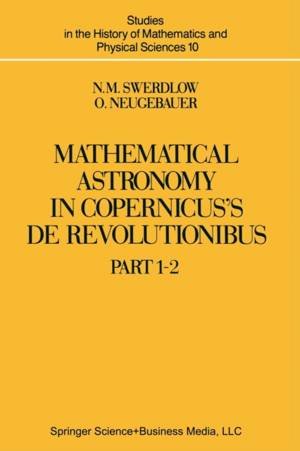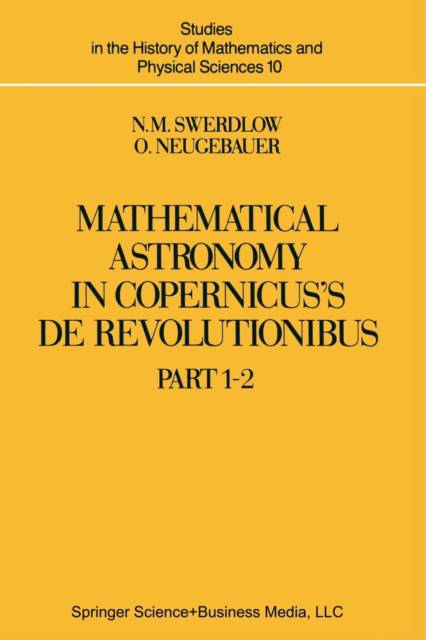
- Afhalen na 1 uur in een winkel met voorraad
- Gratis thuislevering in België vanaf € 30
- Ruim aanbod met 7 miljoen producten
- Afhalen na 1 uur in een winkel met voorraad
- Gratis thuislevering in België vanaf € 30
- Ruim aanbod met 7 miljoen producten
Zoeken
€ 198,45
+ 396 punten
Omschrijving
When I first laid out the framework for A History of Ancient Mathe- matical Astronomy, I intended to carry the discussion down to the last applications of Greek astronomical methodology, i. e. Copernicus, Brahe, and Kepler. But as the work proceeded, it became evident that this plan was much too ambitious, and so I decided to terminate my History with late antiquity, well before Islam. Nevertheless, I did not discard the running commentary that I had prepared when studying De revolutionibus in its relation to the methodology of the Almagest. Only recently, E. S. Kennedy and his collaborators had opened access to the" Maragha School" (mainly Ibn ash-Shalir), revealing close parallels to Copernicus's procedures. Accordingly, it seemed useful to make available a modern analysis of De revolutionibus, and thus in 1975 I prepared for publication "Notes on Copernicus. " In the meantime, however, Noel Swerdlow, also starting from Greek astronomy, not only extended his work into a deep analysis of De revolu- tionibus, but also systematically investigated its sources and predecessors (Peurbach, Regiomontanus, etc. ). I was aware of these studies through his publications as well as from numerous conversations on the subject at The Institute for Advanced Study and at Brown University. It became clear to me that my own investigations lay at too superficial a level, and I therefore withdrew my manuscript and suggested to Swerdlow that he undertake a thoroughgoing revision and amplification of my "Notes. " His acceptance of my proposal initiated the present publication.
Specificaties
Betrokkenen
- Auteur(s):
- Uitgeverij:
Inhoud
- Aantal bladzijden:
- 711
- Taal:
- Engels
- Reeks:
- Reeksnummer:
- nr. 10
Eigenschappen
- Productcode (EAN):
- 9781461382645
- Verschijningsdatum:
- 4/01/2012
- Uitvoering:
- Paperback
- Formaat:
- Trade paperback (VS)
- Afmetingen:
- 156 mm x 234 mm
- Gewicht:
- 1011 g

Alleen bij Standaard Boekhandel
+ 396 punten op je klantenkaart van Standaard Boekhandel
Beoordelingen
We publiceren alleen reviews die voldoen aan de voorwaarden voor reviews. Bekijk onze voorwaarden voor reviews.











